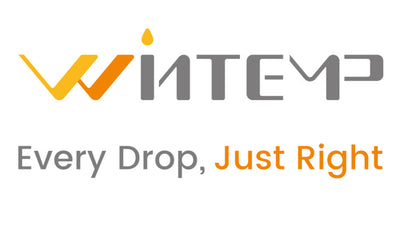🔥 Introduction: One Element, Many Stories
Water is universal — but how we heat it, drink it, and integrate it into daily life varies dramatically around the world. In some cultures, hot water is essential from dawn to dusk. In others, chilled sparkling water is the standard. In some markets, the kitchen is a multifunctional hub; in others, it’s a strictly practical space.
For brands like WINTEMP, understanding these cultural nuances is more than just good marketing — it’s the foundation of designing products that fit seamlessly into people’s lives.

💡 1. The U.S.: Speed, Convenience & Lifestyle Integration
In the United States, the modern kitchen is about efficiency, multi-functionality, and lifestyle. Most homes traditionally rely on kettles or stovetops for hot water, and bottled water for daily hydration.
But two big trends are reshaping this:
- The rise of instant hot water dispensers, giving households 208.4 °F (98 °C) water on demand for coffee, tea, oatmeal, and quick meals.
- The shift away from bottled water, with sparkling and filtered dispensers becoming popular among Millennials and Gen Z who value sustainability and wellness.
WINTEMP adapts by offering under-sink hot water dispensers with sleek dual-outlet faucets — integrating seamlessly into open kitchen designs without clutter.
💡 2. Europe: Boiling Water as a Built-In Standard
In many parts of Europe, especially the UK, Netherlands, and Northern Europe, boiling water taps are not a luxury — they’re standard fixtures. Homeowners expect 98 °C water instantly for tea, cooking, and sterilizing, and kitchens are often smaller but more integrated.
European consumers also care deeply about design harmony and energy efficiency due to stricter regulations and compact homes. Here, WINTEMP’s Boiling Water Dispenser models are positioned as a built-in appliance, emphasizing precision, durability, and minimalism to match European cabinetry and aesthetics.

💡 3. The Middle East: Hospitality & Purity
Across the Middle East, hot drinks are a symbol of hospitality. Tea preparation is often a social ritual, and serving guests quickly is essential. At the same time, water purity is a top priority due to regional water quality concerns, making filtration + hot water systems especially relevant.
Kitchens often feature dedicated tea/coffee preparation corners, and aesthetic integration is key for luxury homes. WINTEMP’s approach in this market emphasizes fast heating, reliability under high usage, and elegant faucet designs that suit both modern villas and traditional hospitality spaces.
💡 4. Latin America: Growth Potential & Hybrid Habits
Latin America presents a fascinating hybrid:
- In many regions, electric kettles are less common, and hot water is typically generated via stovetops or centralized heaters.
- Filtered or bottled water dominates daily consumption.
- However, urban middle-class households are rapidly adopting compact under-sink hot water systems for both cooking and beverage preparation.
This market values practicality, affordability, and reliability, and is at a stage similar to where the U.S. was a decade ago — poised for rapid adoption of instant and filtered systems. For WINTEMP, this represents one of the most dynamic growth frontiers.

💡 5. One Brand, Multiple Identities
What connects all these markets is the growing demand for comfort, safety, and sustainability. What differs is how those needs manifest culturally:
- In the U.S., it’s about convenience & lifestyle.
- In Europe, built-in precision & efficiency.
- In the Middle East, hospitality & purity.
- In Latin America, practicality & emerging modernity.
WINTEMP’s strategy isn’t to offer a single “global” product, but to adapt product lines — boiling dispensers, sparkling water units, tankless heaters, and portable systems — to fit these distinct patterns.
✨ Conclusion: Local Cultures, Global Innovation
Hot water may be a universal necessity, but how it fits into daily life is profoundly local. From London flats to Texas kitchens, from Riyadh villas to Buenos Aires apartments, drinking and heating water reflects culture, climate, architecture, and values.

WINTEMP’s mission is to bring precise, elegant, and efficient water solutions to every home — not by imposing a single way of living, but by listening to local habits and responding with thoughtful design.
In a globalized world, understanding these differences isn’t just good business. It’s the future of product innovation.

